If you’re like most people, you’ve probably lost track of time while working on a project or task. Before you know it, hours have gone by, and you’re left scrambling to figure out what you were doing or to make sense of the time you just logged in. AI personal assistants and AI time tracking can help smooth out this process. They can help accurately track time, make sense of the data, and even write reports based on what you did when you took a break from your work to get a snack. In this guide, we’ll outline how artificial intelligence personal assistants work, their benefits, and how they can help you achieve your goals. Antispace is an AI-based productivity operating system that seamlessly integrates personal assistants into the user experience. Its goal is to help users learn more about their work habits and boost their productivity.
What are AI Personal Assistants?
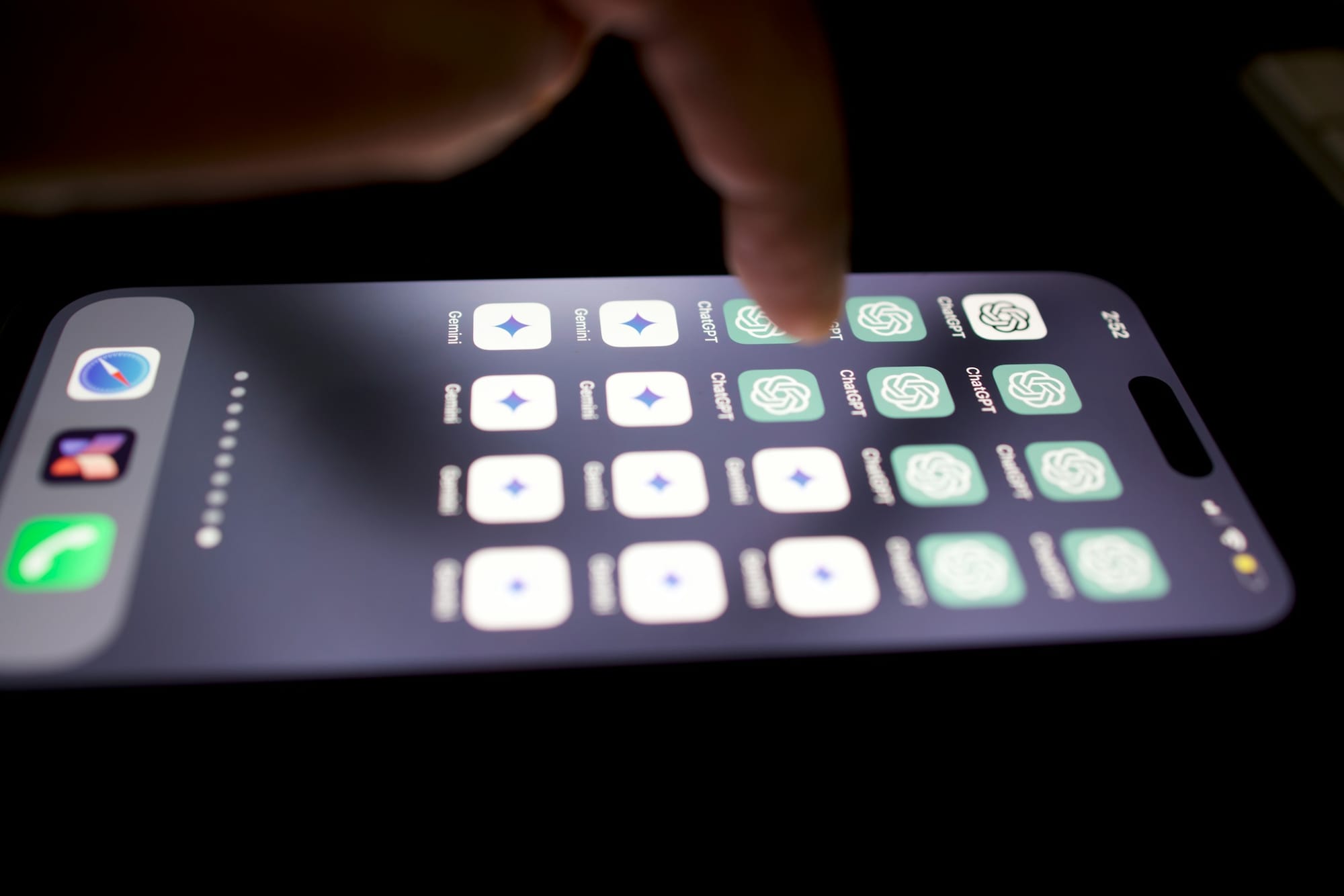
AI personal assistants are software applications powered by artificial intelligence to help users manage tasks through spoken commands, typed instructions, or learned behavior. These digital helpers are evolving daily, becoming more sophisticated at handling complex tasks like:
- Organizing schedules
- Retrieving information
- Automating routine activities
- Providing entertainment recommendations
How AI Assistants Work
AI assistants aren’t just single-minded command executors—they rely on machine learning, natural language processing (NLP), and predictive analytics to interpret what users want, learn individual preferences, and anticipate future needs.
Here’s a breakdown of these core technologies:
- Machine Learning (ML): This enables AI assistants to improve performance over time by learning from interactions. The more you interact with an assistant, the better it becomes at predicting what you want, from reminders to playlist suggestions.
- Natural Language Processing (NLP): NLP allows these assistants to understand and interpret human language accurately. Thanks to NLP, assistants recognize context, tone, and intent, making it feel like you’re conversing with an actual person.
- Predictive Analytics: By analyzing past behavior, predictive analytics enable an AI assistant to anticipate user needs. For instance, if you regularly order groceries on Thursdays, a predictive assistant may suggest it at the right time or even automate the order.
Cloud-Based, Smart, and Rapidly Growing Market
AI assistants are often based on the cloud, meaning you can access them anywhere with an internet connection. They can be connected to smart devices to integrate even more into your daily life. The best AI assistants rely on self-teaching algorithms to become highly personalized. For example, they can learn your preferences.
The market for AI assistants has been rapidly growing and becoming more competitive. The global intelligent virtual assistant market size is projected to grow from USD 13.53 billion in 2024 to USD 119.92 billion by 2033 at a CAGR of 26.07%.
Benefits of Using AI Personal Assistants

People want quick, accurate answers to their questions—especially when they encounter software or digital tools issues. AI assistants deliver reliable responses 24/7, ensuring users get the help they need without delay.
The more efficiently and effectively resolved issues, the more satisfied users will be. AI assistants help create seamless user experiences that boost satisfaction and loyalty.
Reduce Training and Support Costs
AI assistants can significantly reduce the costs of onboarding, training, and customer support. They automate repetitive inquiries, allowing new users to self-serve instead of relying on human intervention.
This lightens the organization load and helps users get up to speed faster. For instance, an AI assistant can offer step-by-step instructions or pull up relevant help articles if a user struggles with a software feature.
Increase User Adoption Rates
Introducing new technologies often comes with a learning curve that can hinder adoption rates. AI assistants help bridge this gap by providing clear, simple instructions in real-time, leading to higher adoption rates and greater user confidence.
For instance, if an organization introduces new software, an AI assistant can walk employees through key features or answer their questions as they arise. This hands-on, interactive support boosts both confidence and engagement with the software.
Better Utilization of Tools and Resources
By automating repetitive and time-consuming tasks, AI assistants enable a more strategic use of tools and human resources. Routine activities like:
- Scheduling meetings
- Generating reports
- Answering simple queries
AI assistants can seamlessly manage it, allowing employees to focus on more critical tasks that add value.
This leads to a more productive and focused workforce, with people dedicating their energy to innovation, creative problem-solving, or customer engagement. When AI assistants handle tasks like data entry or appointment scheduling, employees can leverage their skills for projects that make a difference.
Enhanced Accuracy and Consistency
AI assistants are designed to operate consistently and accurately, following specific rules and parameters to deliver reliable support. Unlike human support agents who may interpret situations differently, an AI assistant follows programmed responses and knowledge, ensuring a consistent user experience.
This is especially valuable in fields that require adherence to precise workflows or responses. For example, AI assistants in healthcare or finance can be programmed to guide users through processes with high accuracy, ensuring that steps are followed correctly every time. In cases where compliance or precision is key, AI assistants can be a more reliable option.
Continuous Learning and Improvement
Thanks to advancements in machine learning, many AI assistants can improve over time. They gather data on user preferences, common questions, and even mistakes as they interact with users. This feedback helps AI assistants refine their responses, improving accuracy, relevance, and user satisfaction.
The more an AI assistant “learns” from these interactions, the better it understands and serves users. This ability to continuously learn and adapt makes AI assistants a valuable, evolving business tool. Over time, they become more efficient, insightful, and capable, ensuring that their support aligns with changing user needs and trends.
Antispace: The AI-Powered Productivity OS for Effortless Workflow Management
Antispace transforms your daily workflow with an AI-powered, gamified productivity operating system. Our platform seamlessly integrates with your essential tools: Email, Calendar, and Notes, while our AI assistant handles everything from email management to task organization.
Key features:
- Imaginative Email Responses: Automate and streamline email management.
- Automated Calendar Management: Schedule and organize meetings effortlessly.
- Enhanced Note-Taking: Capture and structure information efficiently.
- Streamlined Task Coordination: Keep projects on track with AI-powered organization.
- Reduced Context Switching: Minimize distractions and improve workflow efficiency.
- Virtual Executive Assistant: Let AI handle routine tasks so you can focus on what matters.
Whether you're brainstorming ideas, managing communications, or coordinating projects, Antispace turns productivity from a chore into an engaging experience.
Get started for free with one click today.
Related Reading
- AI Scheduling
- How to Use a Calendar Effectively
- Executive Calendar Management
- Meeting Conflict
- Meeting Deadlines
- How to Use AI for Project Management
- Automated Reminders
How to Use an AI Personal Assistant

Artificial intelligence (AI) has permeated nearly every aspect of our lives, revolutionizing how we work, communicate, and think. One of the most notable manifestations of AI is the virtual assistant, a digital entity designed to understand and respond to human queries and commands.
Get It Together: How AI Personal Assistants Help With Schedule Management
AI personal assistants for schedule management help maintain calendars. They schedule appointments, share notifications, send or accept invites, adjust priorities, and coordinate meetings.
They optimize time and resource utilization by mitigating schedule overlaps, conflicts, and dependencies. Automating repetitive tasks and routine administrative burdens allows users to focus on more productive work—without compromising their schedules.
Your New Customer Service Reps: AI Chatbots
Many businesses use AI-powered chatbots as assistants to handle customer inquiries and support requests on websites, mobile apps, and messaging platforms.
These chatbots can provide instant responses, troubleshoot common issues, route inquiries to human agents when necessary, and collect feedback to improve service quality.
Budgeting Just Got Easier: AI for Personal Finance Management
Managing personal finances can be a daunting task for many individuals. Enter AI assistants specialized in personal finance management. These assistants leverage machine learning algorithms to analyze spending patterns, identify potential areas for savings, and even provide investment recommendations.
By integrating with banking and budgeting applications, these assistants offer personalized financial advice tailored to individual goals and circumstances, empowering users to make informed decisions about their money.
An Organized Inbox: How AI Can Help with Email Management
Do you struggle to hit inbox zero? AI personal assistants draft replies, sort messages, and flag emails that need immediate attention, emptying your inbox faster. They can even suggest responses and mimic tones based on previous emails.
Task Prioritization Made Easy with AI
When your to-do list feels overwhelming, AI virtual assistants prioritize your workflow by deadline, urgency, and importance. They analyze tasks based on your goals and suggest how to tackle each item.
Data Analysis and Reporting to the Rescue
These tools can analyze spreadsheets and generate detailed reports in a few minutes. Instead of crunching numbers and sorting documents by hand, AI-powered tools extract the most valuable insights in a single click.
Personalized Education with AI
AI assistants can be personalized tutors, tailoring learning user experiences to individual student needs. They can provide feedback, answer questions in real-time, and adapt teaching styles based on student progress.
AI assistants can be instrumental in creating a more inclusive environment. They can transcribe lectures for deaf students, translate content for non-native speakers, and offer voice-controlled interfaces for people with mobility limitations.
Streamlining Healthcare with AI
Utilizing virtual assistants in healthcare is currently in its early stages, but significant growth is anticipated by 2029. According to a report by Global Virtual Assistants in Healthcare Market – Analysis and Forecast, 2019-2029, the revenue for the medical virtual assistant market is projected to increase at a compound annual growth rate (CAGR) of 26.29% from 2019 to 2029.
A survey found that 76% of healthcare professionals express confidence in virtual assistants' ability to help them locate health clinics. The primary function of virtual assistants is to guide users in finding help during emergencies and facilitate access to necessary healthcare services.
Enhancing Care and Patient Support
Furthermore, AI-powered virtual health coaches are helping individuals manage chronic conditions such as diabetes or hypertension by offering personalized diet, exercise, and medication adherence guidance.
How AI chatbots in Telehealth can be helpful:
- Preliminary Screenings: The chatbot can ask a series of questions about symptoms to determine the severity of the issue and suggest appropriate actions.
- Answering Patient Questions: Do you have a question about medication or a recent diagnosis? The chatbot can access medical databases and provide basic information.
- Scheduling Appointments: Do you need to see a doctor? The chatbot can help you schedule an appointment based on availability and the type of care required.
Creative Content Generation with AI
AI assistants aren’t limited to mundane tasks but can foster creativity and innovation. These assistants can generate original content such as articles, poetry, or even music compositions through deep learning techniques based on user input or predefined parameters.
While human creativity remains unparalleled, AI-generated content can inspire creators and assist them in generating ideas and exploring new artistic avenues.
Breaking Down Language Barriers with AI
Advanced natural language processing (NLP) algorithms enable these assistants to accurately translate spoken or written text between multiple languages in real-time.
AI-powered translation assistants facilitate international business communications and aid travelers in foreign countries, making the world more connected and accessible.
AI and Mental Health Support
In an era where mental health awareness is increasingly essential, AI assistants provide support and resources to those in need. AI VAs can be valuable brainstorming partners, generating creative content ideas, suggesting new perspectives, and helping to overcome creative roadblocks.
Mental health chatbots equipped with empathetic conversational abilities offer a non-judgmental space for individuals to express their feelings, receive emotional support, and access resources for coping with stress, anxiety, or depression.
Supporting Therapy and Transforming Lives
While they do not replace professional therapy, these virtual assistants can complement traditional treatment methods and provide valuable support between therapy sessions. The applications of AI personal assistants extend far beyond simple tasks like setting reminders or answering trivia questions.
From personal finance management and healthcare support to language translation and creative content generation, these digital entities are transforming industries and improving the lives of individuals worldwide.
Related Reading
- Calendar Automation
- Organizing Calendar
- AI Staff Scheduling
- Google Calendar AI
- Best AI Task Manager
- AI Workflow Management
- Best AI Productivity Tools
- Top Calendar Apps
- Reclaim vs Motion
What to Consider When Choosing AI Personal Assistants

Before you start looking for an AI assistant, make a list of specific tasks you want the tool to help you with. For instance, do you want to organize your email, manage your calendar, or assist you with writing?
Most AI personal assistants can handle various tasks but have unique strengths. By identifying your goals before you start looking, you can find a tool to meet your needs.
Consider Your Work Environment
Your work environment is another important factor to consider when choosing an AI personal assistant. If you have a remote team, your assistant may need different features (collaboration tools, meeting management, etc.) than if you work alone.
Also, consider your occupation and daily activities. For example, AI marketing assistants designed for sales or SEO can be more effective for industry-specific use cases than general AI writing tools.
Look for User-Friendly Software
When choosing an AI personal assistant, select one with a straightforward, user-friendly interface. Some tools require a bit of a learning curve before fully utilizing their capabilities.
Others have intuitive designs that make it easy to start immediately. The quicker you can get up and running with your new AI assistant, the sooner you can boost your productivity.
Determine Your Budget
AI personal assistants can cost anywhere from free to a few hundred dollars per month, depending on their desired features. Before you get too invested in a specific tool, determine your budget and find one with the capabilities you want at a price you can afford.
Most of these tools operate on a subscription basis, so evaluate your needs to understand which tier is best for you.
9 Best AI Personal Assistants for Work

1. Antispace: The Game-Changing AI-Based Productivity Operating System
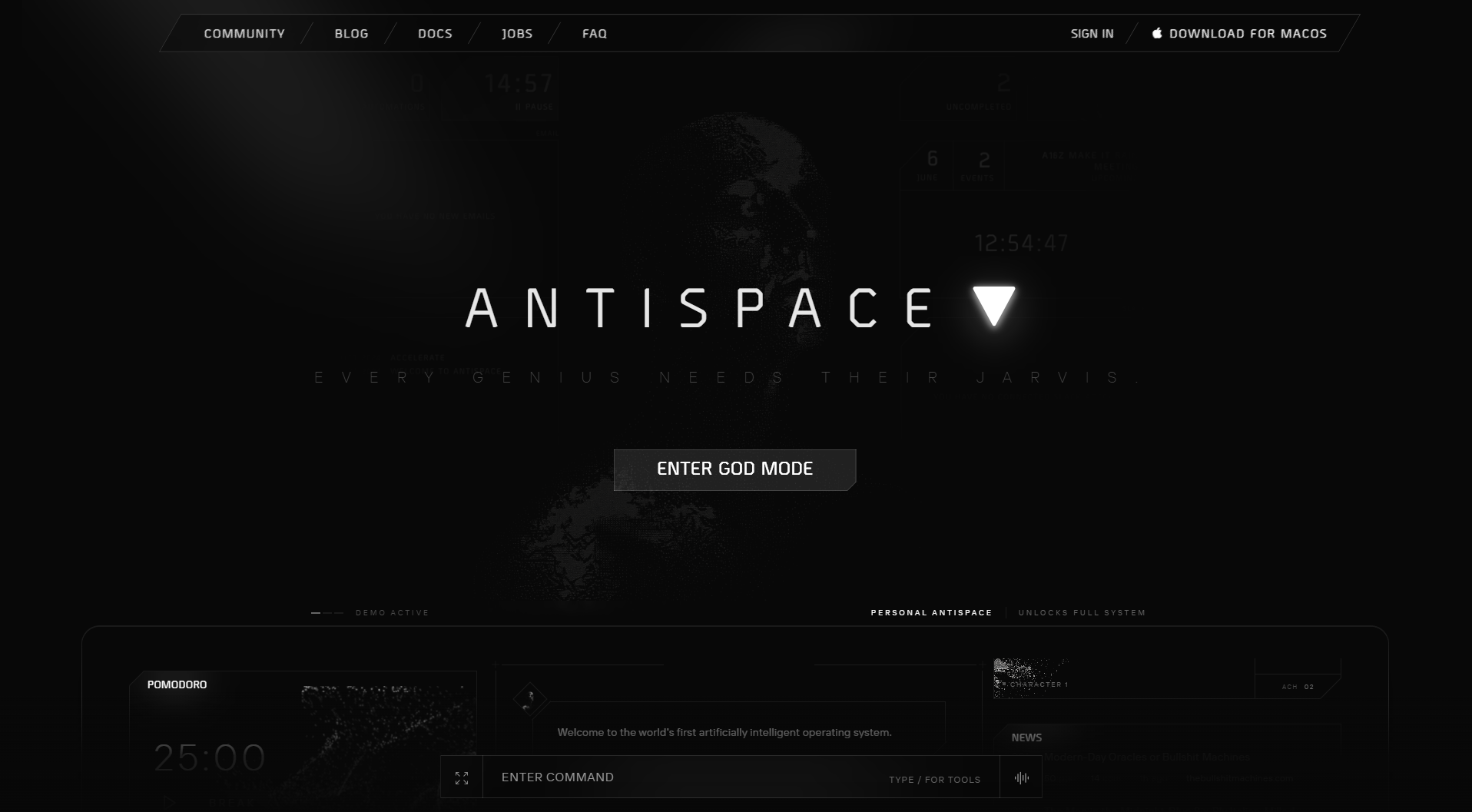
Antispace transforms your daily workflow with an AI-powered, gamified productivity operating system. Our platform seamlessly integrates with your essential tools: Email, Calendar, and Notes, while our AI assistant handles everything from email management to task organization.
Key features:
- Imaginative Email Responses: Automate and streamline email management.
- Automated Calendar Management: Schedule and organize meetings effortlessly.
- Enhanced Note-Taking: Capture and structure information efficiently.
- Streamlined Task Coordination: Keep projects on track with AI-powered organization.
- Reduced Context Switching: Minimize distractions and improve workflow efficiency.
- Virtual Executive Assistant: Let AI handle routine tasks so you can focus on what matters.
Whether you're brainstorming ideas, managing communications, or coordinating projects, Antispace turns productivity from a chore into an engaging experience.
Get started for free with one click today.
2. Boost Productivity By 137% With Motion
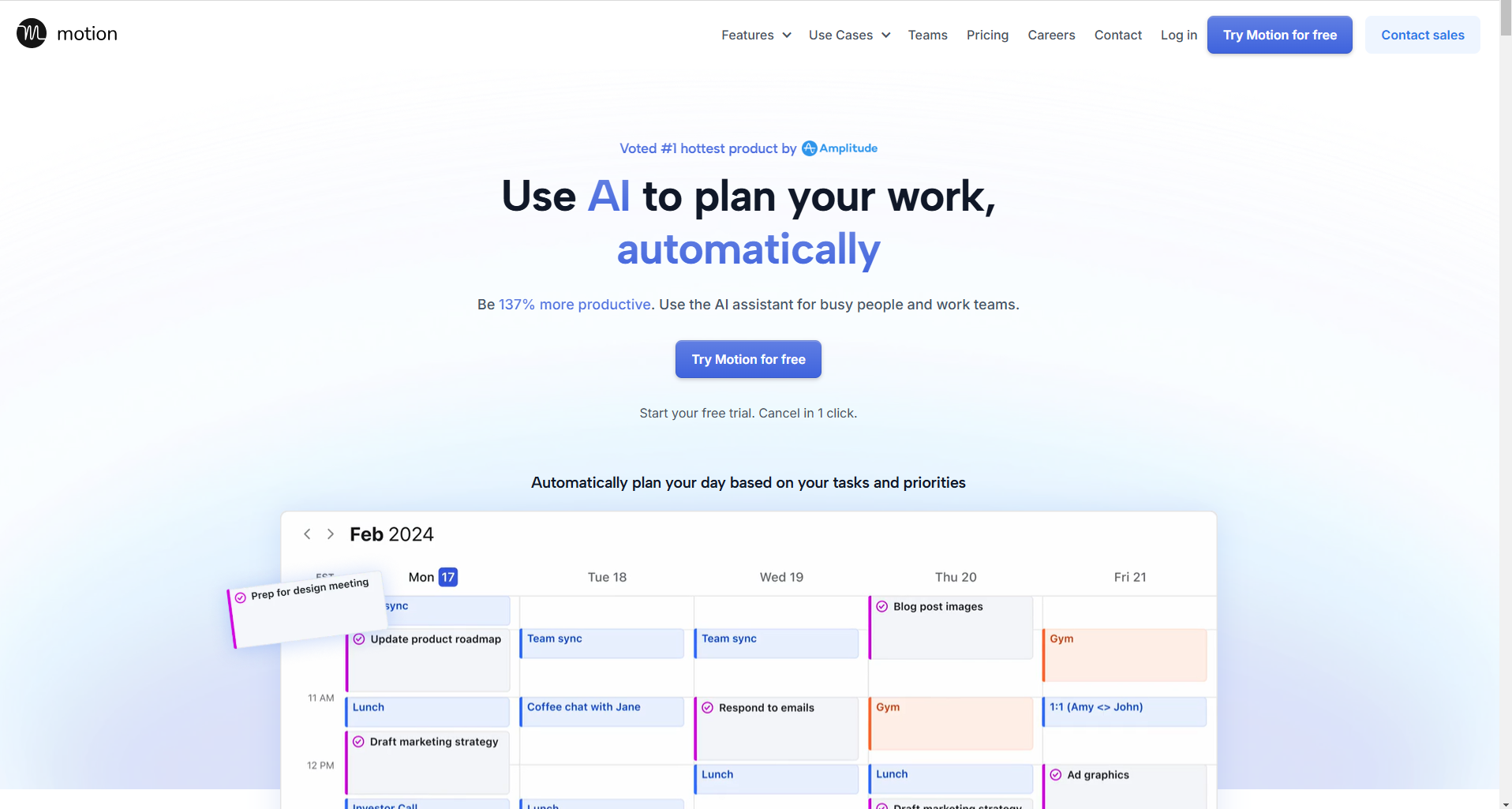
Motion makes a bold claim to boost your productivity by 137%! It does this by automating the planning of your day into a calendar and consolidating all of your planning apps into one dashboard. It prioritizes your tasks so you’re not distracted and jumping between responsibilities.
You can access this AI business assistant anywhere, making it a great choice if you’re frequently on the go. Plus, you’ll receive reminders when a due date is approaching and a weekly report to show how you spent your time.
Motion best features:
- Auto-prioritizes your work
- Uses time blocking to help you focus on deep work
- Color-coded calendar for easy organization
- Access on desktop, iOS, Android, and Web
- Weekly report to track your time
- Reminders for when something’s due
- Collaborate with your team and track their tasks
3. ClickUp AI: The Assistant for Every Role in Your Business
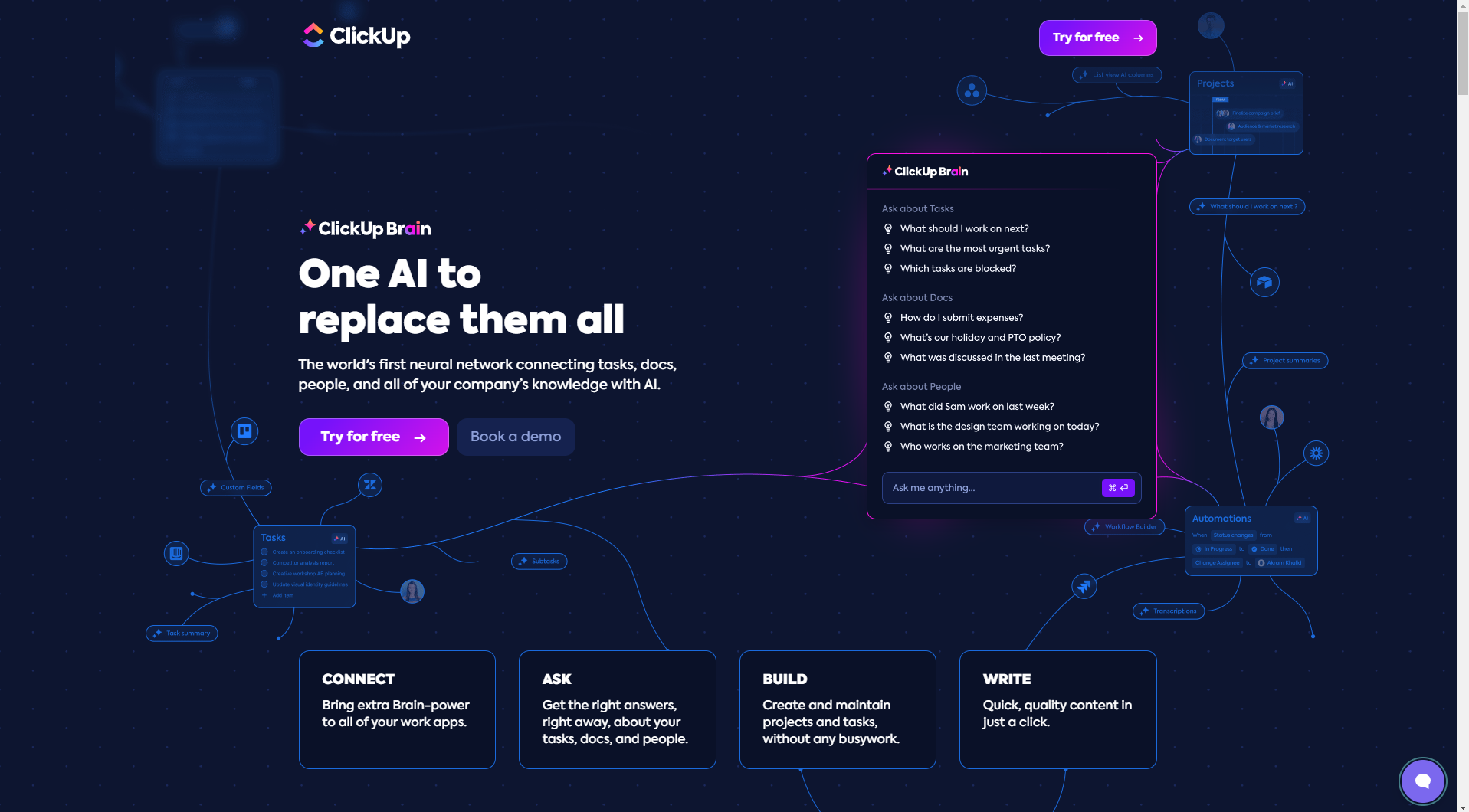
ClickUp is already a widely used project management tool, but its AI features take team productivity even further. There’s an AI agent for every role in your business, helping automate tasks like:
- Writing social posts
- Fixing bugs
- Developing email sequences
ClickUp AI summarizes tasks, comments, meetings, and notes while allowing you to assign tasks to team members. Its writing assistant is a significant time-saver, helping you brainstorm content ideas and craft copy in minutes instead of hours.
ClickUp AI's best features:
- Role-specific prompts for accuracy and context
- AI assistant works across ClickUp’s platform
- AI can write, edit, and summarize text
- Translate into 12 languages
4. Reclaim AI: The Assistant for Optimizing Your Time
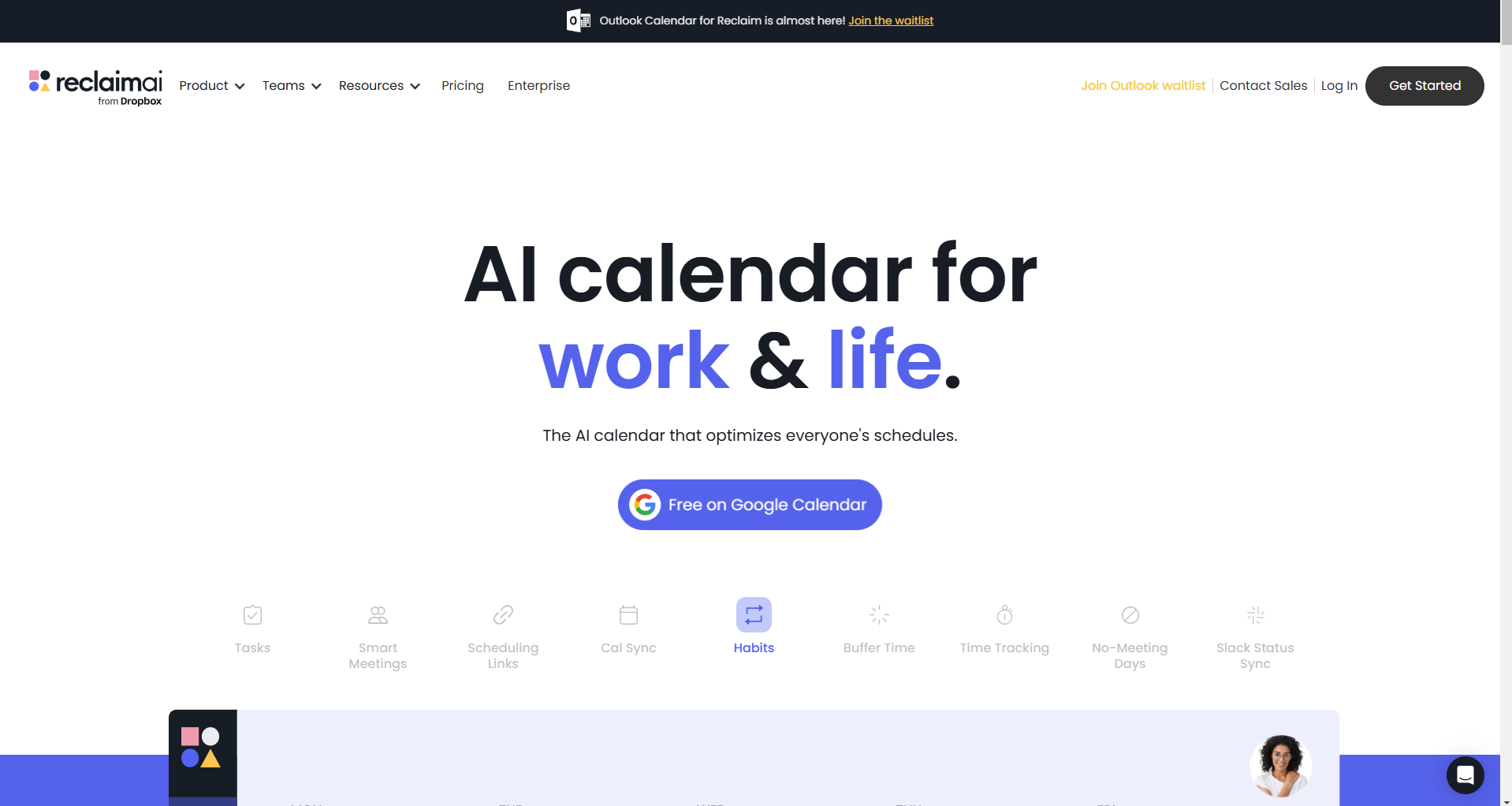
ReclaimAI is another AI assistant for business that protects your team’s time by optimizing calendars and structuring the workweek using AI. It minimizes meeting time by scheduling them at convenient slots without cutting into overtime.
Focusing on deep work, ReclaimAI blocks time for focus and even turns off notifications when you’re working toward a deadline. I was impressed by how well it integrates with popular apps like:
- Slack
- Asana
- Google Tasks
ReclaimAI's best features:
- Set time windows for recurring habits and tasks
- Flexible meeting times to fit your schedule
- Sync work and personal calendars seamlessly
- Integrate with popular apps like Slack and Asana
- Shareable calendar links for easy booking
5. Copy AI: The Writing Assistant for Business
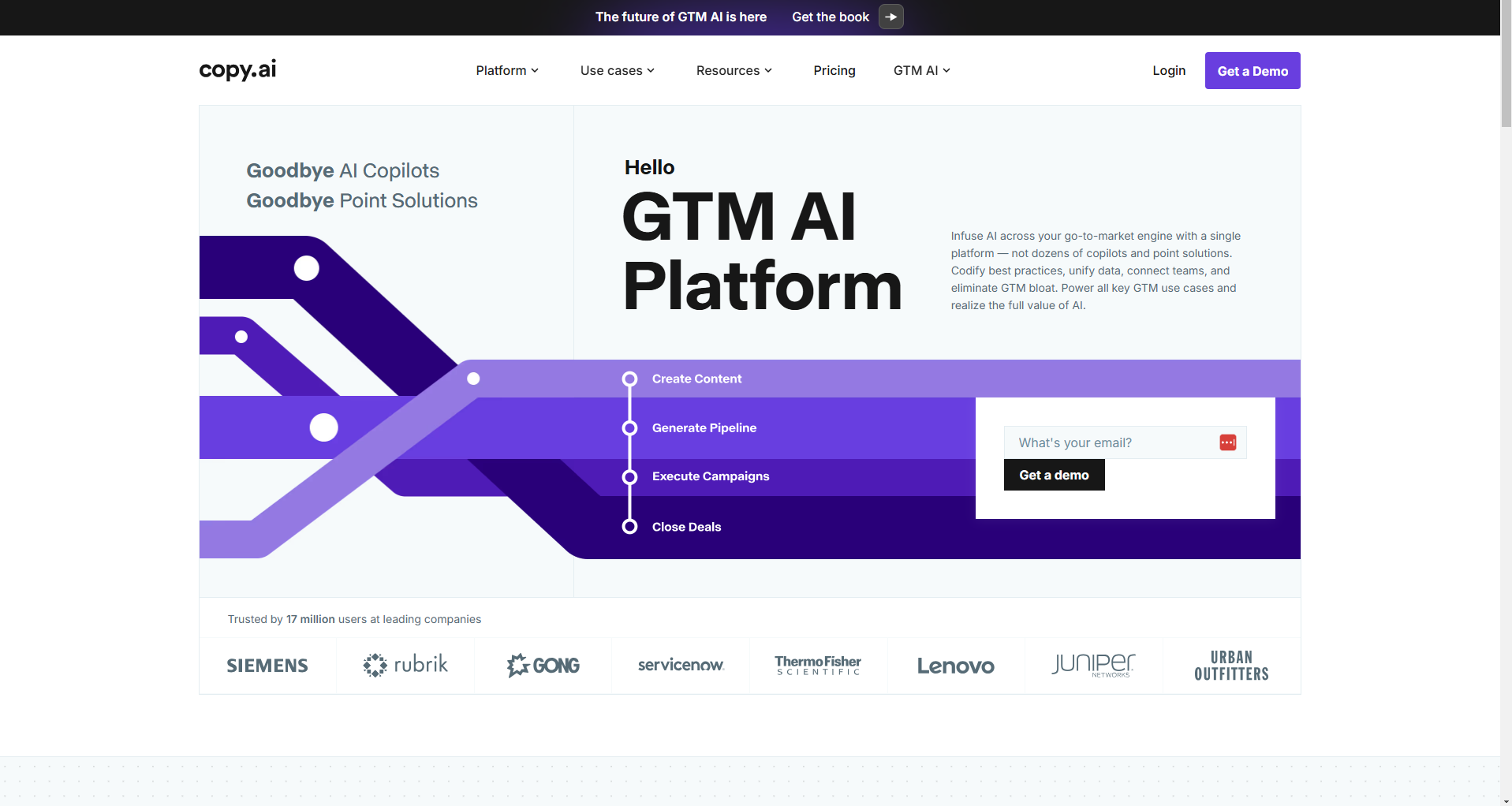
Copy.ai is a writing and workflow assistant that boosts productivity, especially for creating social content, sales, and marketing content. You can train it to understand your brand’s products, services, procedures, and tone of voice, ensuring highly relevant content with minimal manual tweaking.
Beyond writing, Copy.ai also generates workflows, such as an e-commerce abandoned cart email sequence, saving you even more time.
Copy.ai best features:
- Conversational chat that feels similar to ChatGPT
- Prompt library to help when you're stuck on what to ask
- Train Copy.ai on your data for brand-specific content
- Over 90 writing templates for various needs
- Supports over 25 languages for global reach
6. Parrot AI: The Meeting Assistant
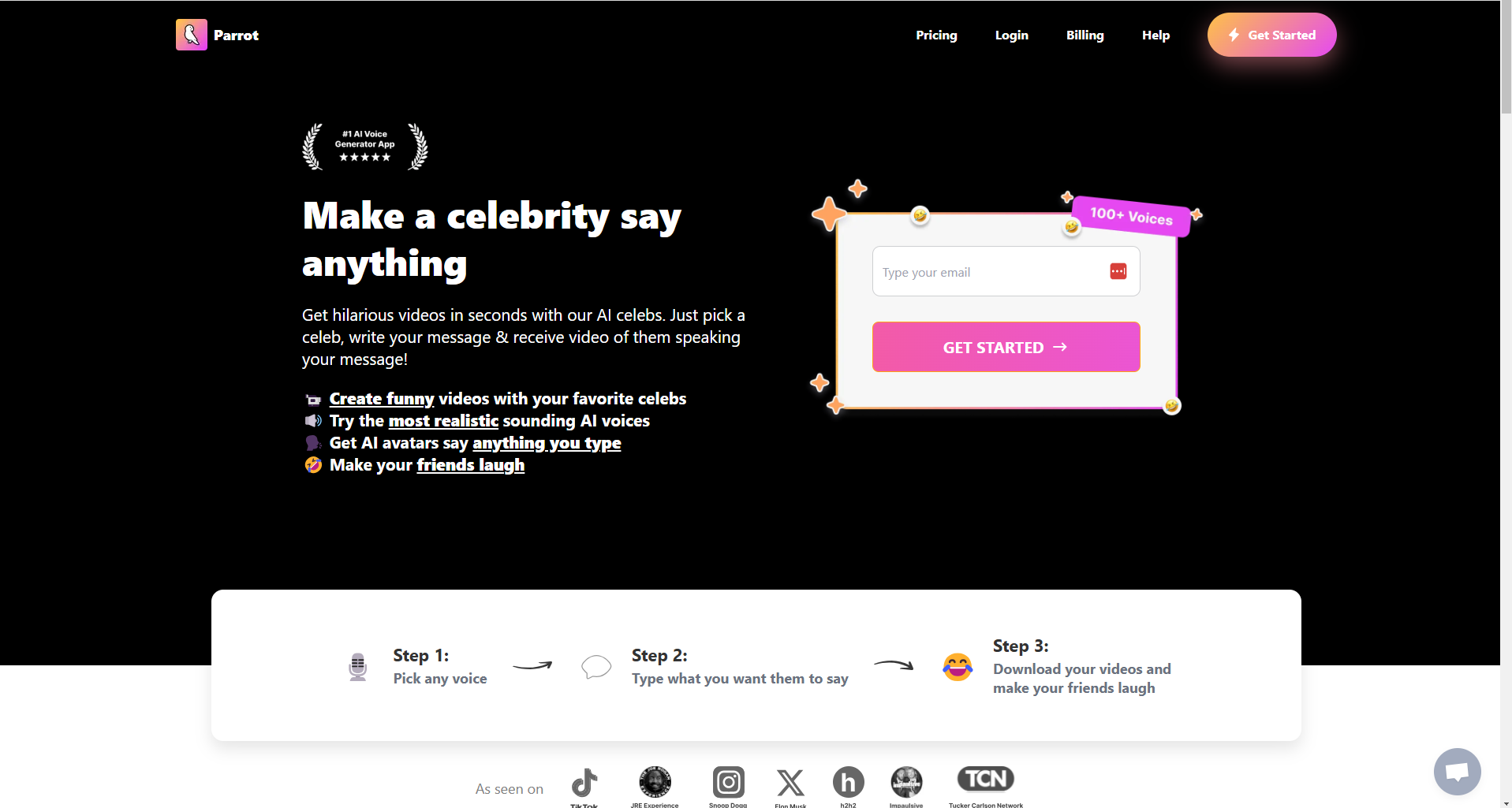
Taking meeting minutes manually can be time-consuming and tedious. Parrot AI eliminates this hassle by recording, transcribing, and summarizing meetings, ensuring you always have an accurate record of what was said.
Beyond just transcriptions, Parrot AI acts as a knowledge base, helping you craft follow-up emails, schedule action items, and generate reports with ease.
Parrot AI's best features:
- Create and send snippets of a meeting via a link
- Works seamlessly with:
- Webex
- Google Meet
- Microsoft Teams
- Zoom
- Transcribes in 37 languages for global accessibility
- Chat with your transcripts and pull up searchable data
7. Murf: The Voice-Over AI Assistant
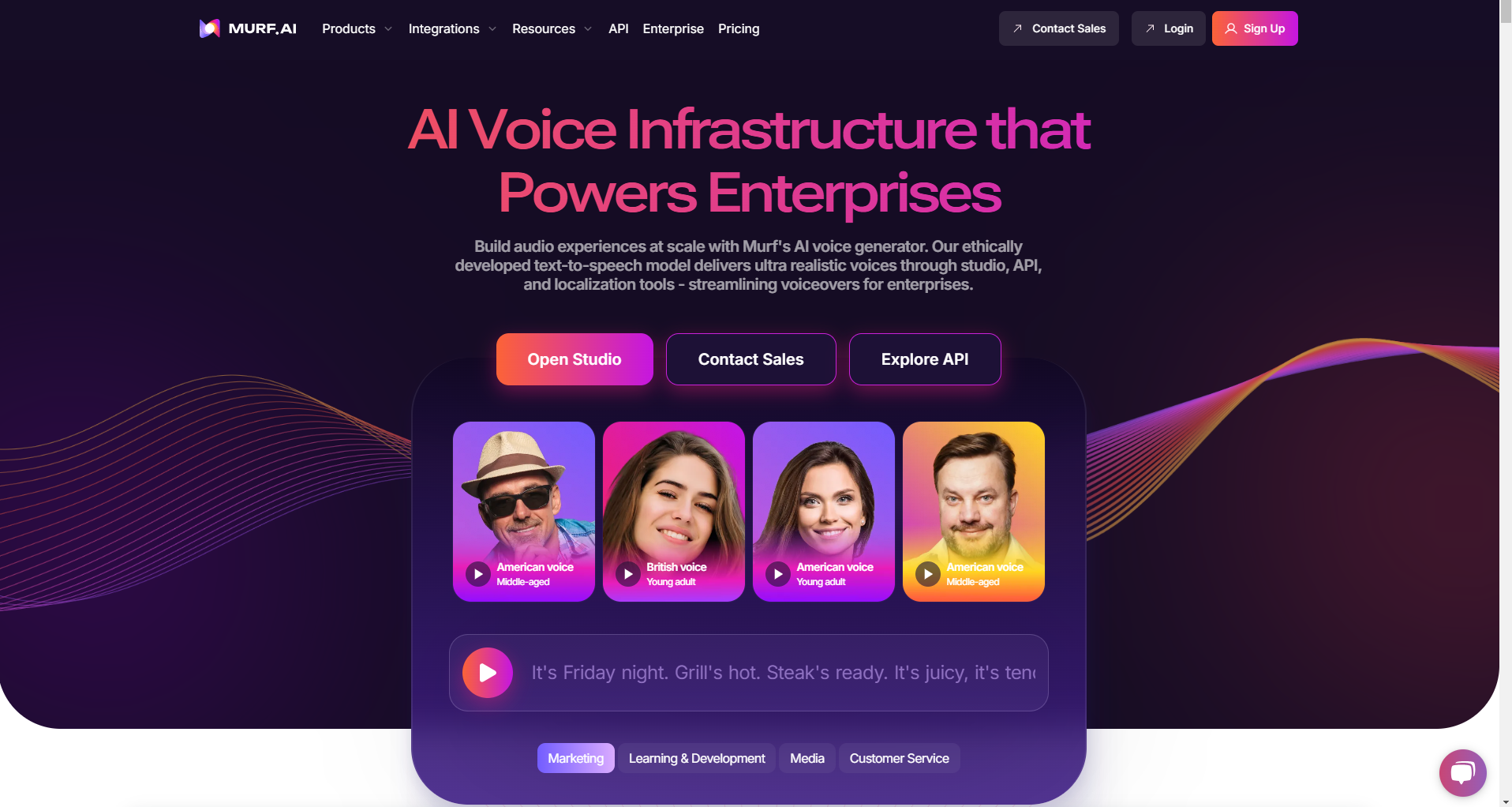
Murf AI makes creating voiceovers efficient and accessible, eliminating the need for costly and time-consuming voiceover artists (I should know—I am one!). With complete control over your voiceovers, simply type your script, choose a realistic AI voice from Murf’s library, and generate high-quality audio in seconds.
No studio or special equipment is needed—just seamless voiceover creation for podcasts, videos, and websites.
Murf's best features:
- Create voiceovers just by typing your text
- Add emphasis inflections, and adjust pitch & speed
- Supports 20 languages for diverse projects
- High-quality, studio-grade audio for professional results
- Choose from up to 120 voices to match your needs
8. Taskade: The Second Brain AI Assistant
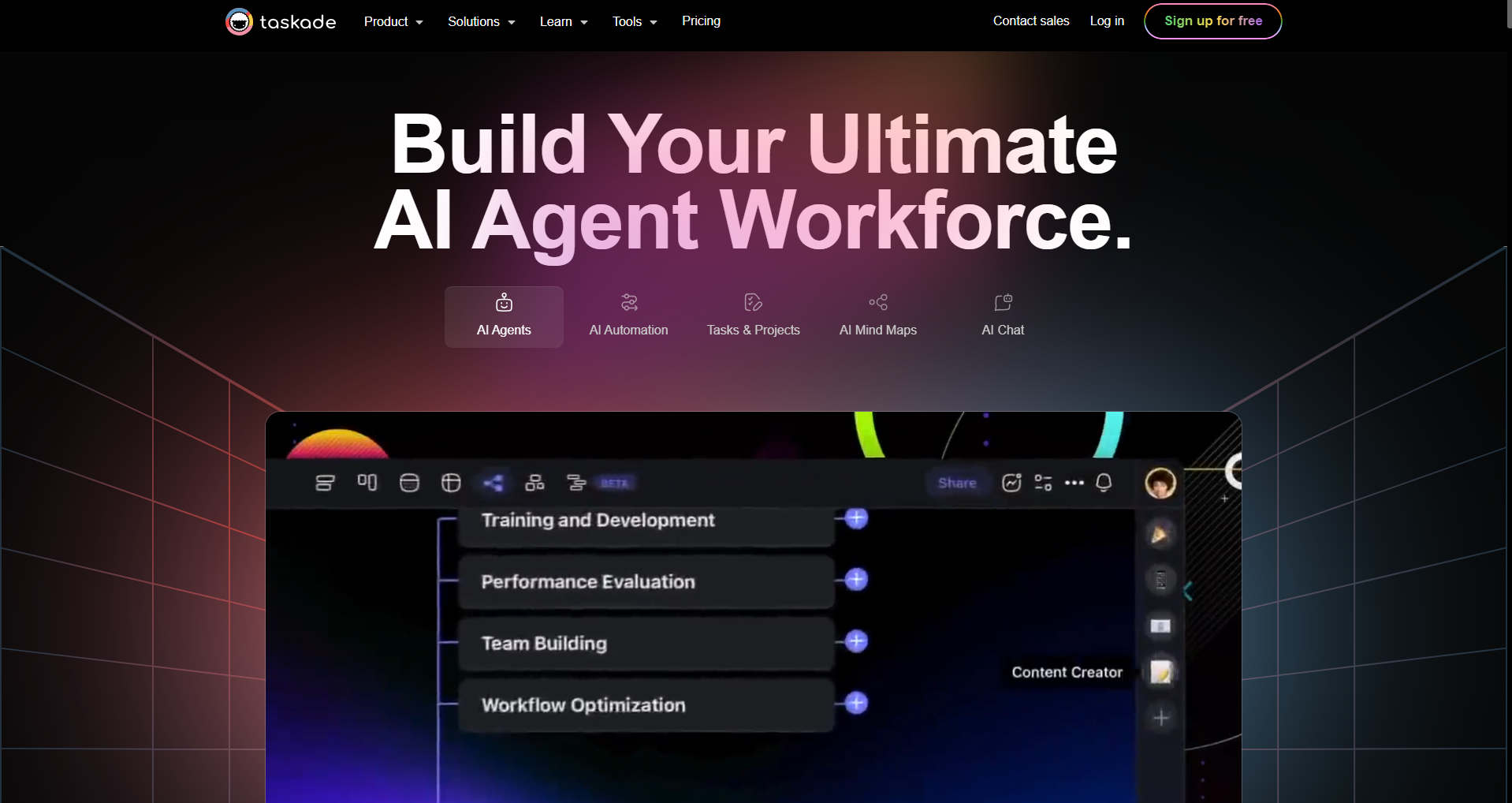
Taskade works like a second brain, automating hundreds of tasks with a team of AI personal assistants. Whether you need help writing copy, creating to-do lists, or structuring notes, Taskade has you covered.
Built on ChatGPT’s language model, it supports multiple languages and integrates with thousands of apps. Plus, its intuitive layout makes navigation effortless.
Taskade best features:
- AI agents assist with 700+ tasks
- Real-time collaboration on unlimited projects across all devices
- Assign tasks to team members with ease
- Built-in video calls for seamless communication
- Keyboard shortcuts for faster workflow
9. SaneBox: Best for Keeping on Top of a Busy Inbox
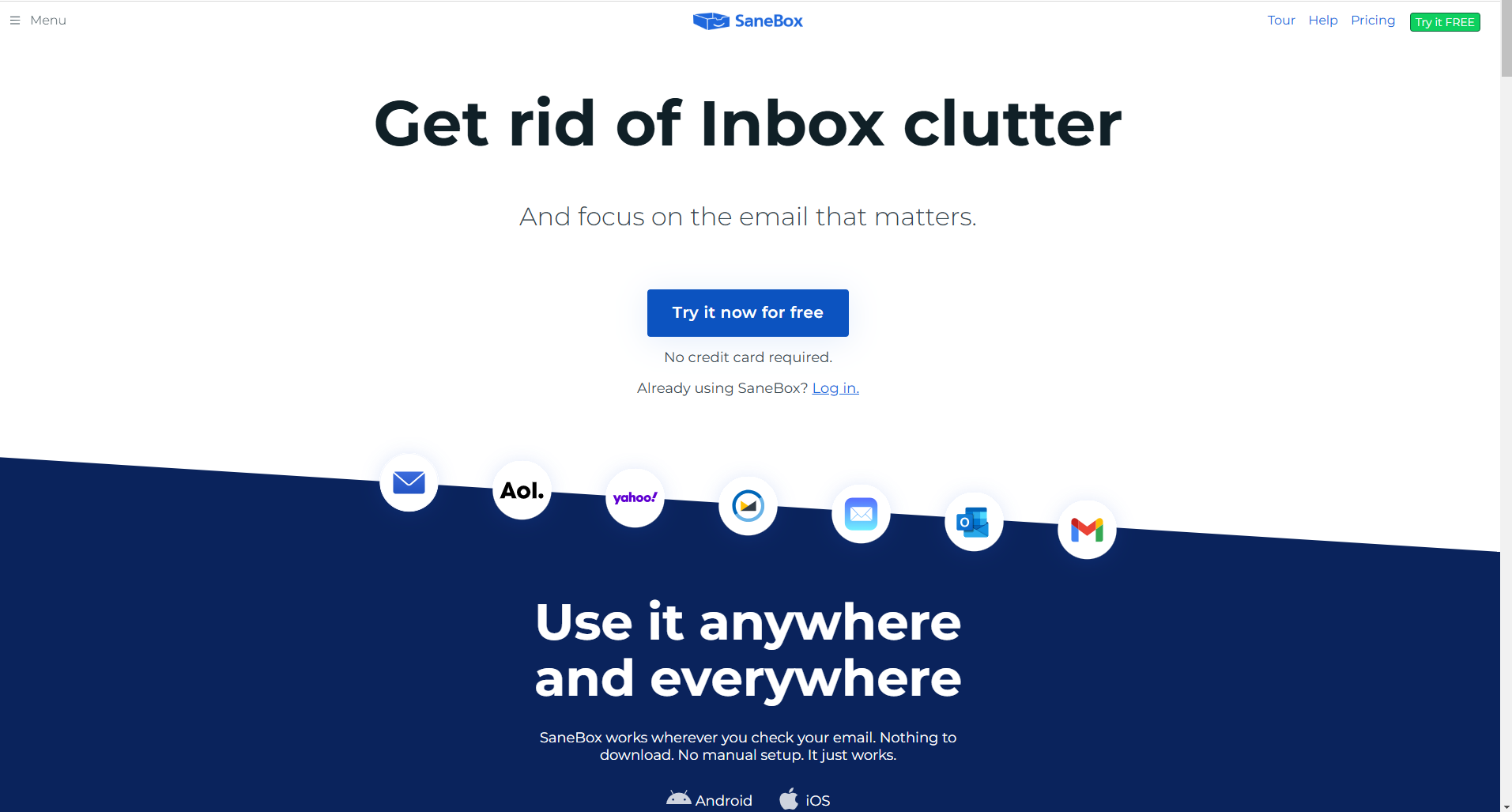
If you’re like me, you check your inbox every time a notification pops up—wasting a lot of time. That’s where SaneBox comes in. This AI virtual assistant organizes and prioritizes your inbox, ensuring you only read essential emails.
You can train it to recognize what matters most, and it’ll send you a daily report of what you missed. SaneBox never reads sensitive information, and your emails stay on your server.
SaneBox's best features:
- Works with any email client for seamless integration
- There is no impact on sending or receiving emails if SaneBox is down
- Efficiently train SaneBox by moving emails—it remembers for the next time
- Get a daily report on your inbox activity
- Supports multiple email addresses for better organization
Let Our AI-based Productivity Operating System Handle Your Boring Work
Antispace is an AI personal assistant that focuses on productivity. The platform integrates with standard tools like email, calendar, and note-taking applications to reduce your time on everyday tasks.
Antispace’s AI takes over mundane responsibilities such as email organization, calendar scheduling, note-taking, and task coordination to help you work smarter, not harder.